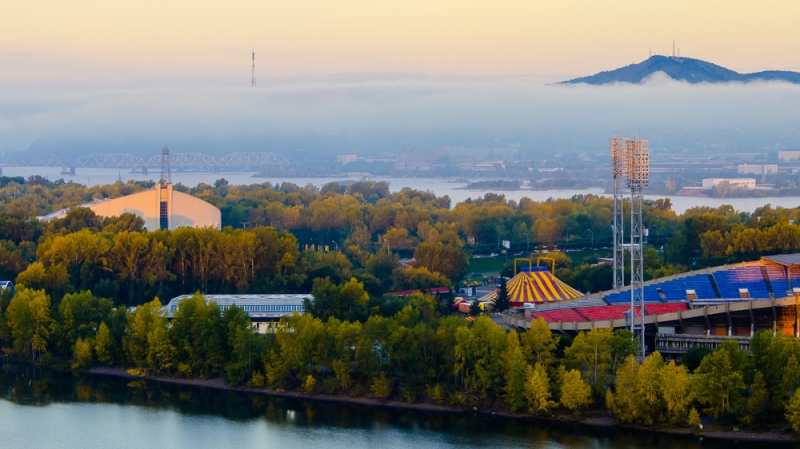
All guests of the Siberian city unanimously note: Krasnoyarsk is a territory of contrasts. It combines the beauty of pristine nature and the genius of engineering, a harsh industrial environment and the richest cultural potential, serenity and determination. Krasnoyarsk knows how to delight and surprise. You can verify this by visiting the most interesting places that have become the calling cards of the city.
Spending a weekend in Krasnoyarsk will be interesting for residents of Irkutsk, Kemerovo, Tomsk, Novosibirsk, Abakan and other nearby cities, the journey from which will not take much time.
Approximate travel budget for one person – from 3,500 rubles*.
- round-trip train tickets from 1,400 rubles*. Air traffic is established from Tomsk, Novosibirsk, Tyumen. You can fly from Moscow to Krasnoyarsk every day. Prices start from 4,500 rubles* one way. The flight lasts an average of 4.5 hours.
- 1 night in a hostel – from 248 rubles* or in a 3* hotel – from 1,800 rubles*;
- The average bill in a cafe is 400 rubles;
- Walks around the city, travel on public transport, souvenirs – 1000 rubles.
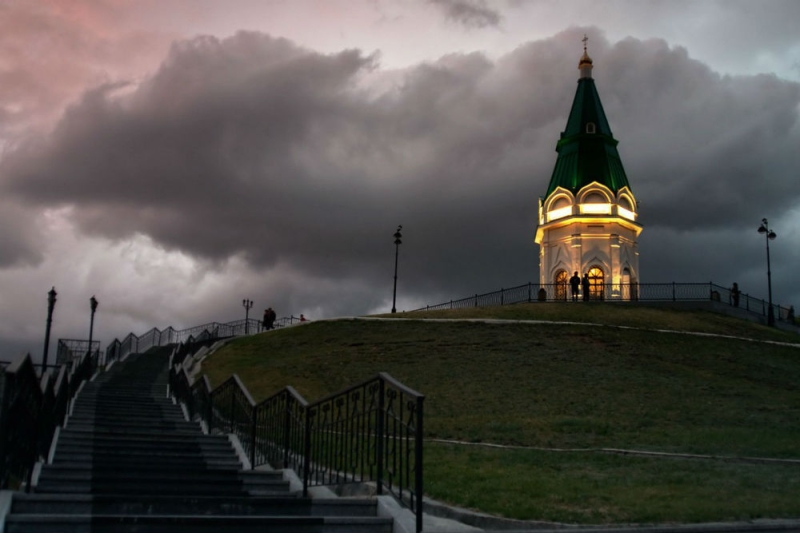
Paraskeva Pyatnitsa Chapel
The chapel is a famous symbol of Krasnoyarsk. It is located on the top of Karaulnaya Mountain, where during the time of the ancient Kachin Tatars there was a pagan temple.
At the beginning of the 19th century, the merchant Novikov built a wooden chapel, on the site of which, half a century later, the current structure appeared, erected at the expense of the gold miner Pyotr Kuznetsov.
From the site on Karaulnaya Mountain you can see the entire central part of Krasnoyarsk. Vasily Surikov painted his paintings here. And in 1887, radio inventor Alexander Popov observed a solar eclipse from a site next to the chapel.
The Chapel of Paraskeva Pyatnitsa can be seen on the ten-ruble banknote. You can also hear this place. At exactly noon a cannon fires from here. The 1938 model howitzer was installed in 2001 according to the Cossacks’ idea. After all, almost four centuries ago it was the Cossacks who became the founders of the fort “on Krasny Yar” and fought using cannons.
Address: Stepan Razin street, 51a
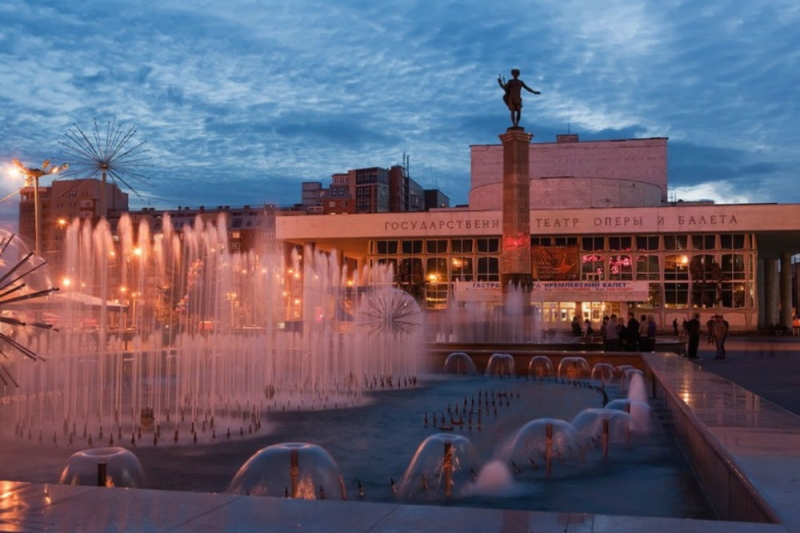
Theater Square
The square in front of the Opera and Ballet Theater is the heart of the city. All city holidays and celebrations take place here. And, of course, there are many interesting objects concentrated here: hotels, a theater, fountains, a monument to Chekhov, a 13-meter pedestal with a figure of Apollo, the tallest building of the Yenisei River Shipping Company in the area. The territory is constantly being improved. In 2001, a clock tower similar to London’s Big Ben appeared near the administration building. In 2005, the largest fountain in the city, “Rivers of Siberia,” opened on the lower tier of the square. This is a cascading light and music fountain, which is a complex composition of bronze and marble. It is decorated with sculptures of seven nymphs, which symbolize the small rivers of Krasnoyarsk, and a huge sculpture of Father Yenisei.
Address of the Opera and Ballet Theater: Perenson Street, 2
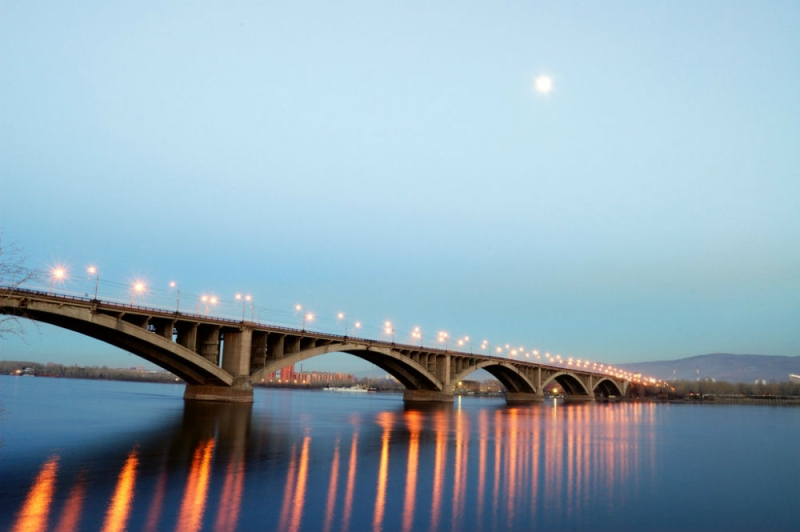
Embankment of the left bank of the Yenisei and Communal Bridge
Walking along the banks of the mighty Yenisei is a special pleasure. The length of the pedestrian path stretching along Dubrovinsky Street is almost 3 kilometers. And local attractions can be found almost at every step. On the arrow is the Peace Square Museum Center, a monument to the Siberian writer Viktor Astafiev, then a river station and a local history museum. In the center of the embankment is the Communal Bridge. At the time of construction in the mid-50s of the 20th century, it was the longest bridge in Asia. For the unique technology of installing reinforced concrete semi-arches and closing the vaults afloat in the span, the object was included in the UNESCO reference book “Bridge Construction of the World”.
By the way, the Communal Bridge is another symbol of the ten-ruble bill.
Where is: Dubrovinsky Street, the bridge connects the banks – from Weinbaum Street (left) to the Bridge Square ring (right)
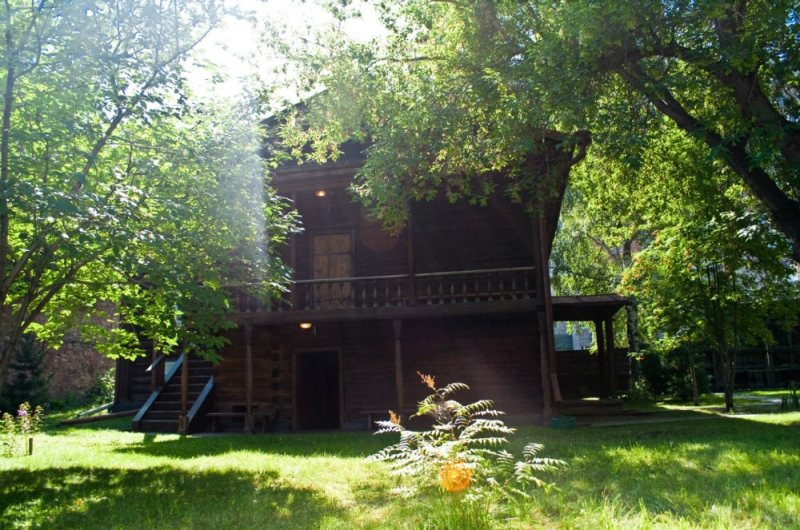
Surikov Estate Museum
In the very center of Krasnoyarsk there is a unique house, to which a wooden sidewalk leads. Both outside and inside the courtyard there is an atmosphere of pre-revolutionary Siberia. The famous artist Vasily Surikov was born and raised in this house. He lived here before entering the Academy of Arts, and visited here several times afterwards. It was in this place that many of the images of his future paintings were born and one of his last canvases, “The Capture of a Snowy Town,” was painted. His mother and younger brother lived here until their last days. The heiresses, the artist’s daughters, donated the estate to Krasnoyarsk.
The museum in the Surikov house was opened on the 100th anniversary of the artist’s birth, in 1948. Visitors can get acquainted here with the life and work of the artist, the life of the Surikov family, and the history of the Yenisei Cossacks. The museum hosts plein air artists, educational games, museum lessons and quizzes.
Address: Lenin street, 98
Opening hours: daily from 10 to 18, closed on Monday**
Poster of events on the museum website: surikov-dom.com
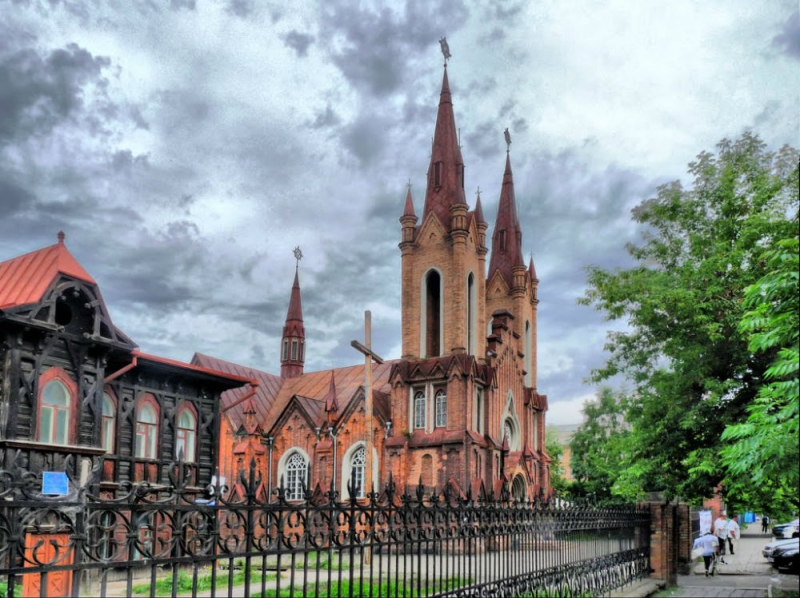
Organ Hall
It’s worth coming here even if you’re not a fan of classical music. The Organ Hall in Krasnoyarsk is a beautiful building, built in the Gothic style, an architectural monument. Initially it was a Roman Catholic church, “Church of the Transfiguration of the Lord.” It appeared in 1911, replacing a dilapidated wooden church.
In 1936, the temple building was transferred to accommodate cultural objects. For a long time, devastation reigned here, and only in the late 1970s did restoration begin. In the fall of 1982, the temple opened its doors for the first time as a concert hall, and a year later an organ appeared on its stage. Today the organ hall of the Krasnoyarsk Philharmonic is one of the centers of academic art in Siberia.
In the early 1990s there was a revival of the Roman Catholic parish. And now one building combines a philharmonic society, an architectural monument and a church.
Address: Dekabristov street, 20
Opening hours of the Organ Hall, posters and tickets for concerts on the Philharmonic website: krasfil.ru
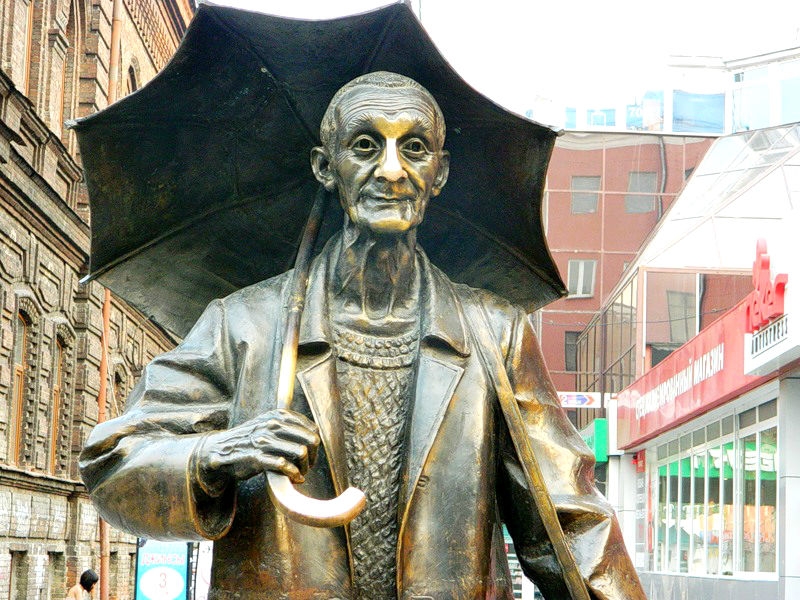
Monument to Pozdeev
The sculpture of a sweet old man with a large open umbrella and easel, installed near the Central Department Store, attracts the attention of all passers-by. The monument to the famous Krasnoyarsk artist Andrei Pozdeev appeared in 2000. The bronze man smiles touchingly at passers-by and flashes his nose. It’s all about the sign: they say that you must rub the artist’s nose and hold the handle of his umbrella.
Andrei Pozdeev is called the “Siberian Matisse”. On the canvases of this painter there are bright bouquets, the streets of his native city, colorful landscapes of the outskirts of Krasnoyarsk, portraits of people.
Today the master’s works adorn the Tretyakov Gallery and the Russian Museum, and are stored in art galleries in Siberian cities, including Khabarovsk and in many other collections around the world.
Where is it: Mira Avenue, next to building No. 85
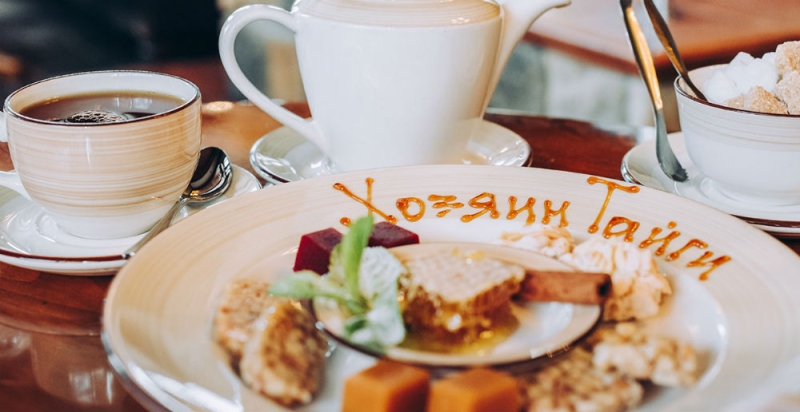
Restaurant “Master of the Taiga”
Any specialist will reproachfully say that Krasnoyarsk cuisine does not exist – there are Siberian and Russian dishes. However, the local gastronomic flavor is definitely present in Krasnoyarsk!
The most striking example of this is the restaurant “Master of the Taiga”.
Here you can try local fish – nelma, grayling, sturgeon. And, of course, venison, which comes directly from Evenkia. Also worth trying are lingonberries, pine nuts, and fern.
The interior of the establishment, which is made in the style of an Alpine chalet and decorated with photographs and memorabilia from the archives of the film crew of the film “Master of the Taiga” and the family of Vladimir Vysotsky, deserves special attention.
Collectible Austrian and German ski equipment is displayed in the banquet hall. The fact is that the restaurant is located in the Bobrovy Log fan park, where the 2019 Universiade will be held.
Address: Sibirskaya street, 92
Opening hours: daily from 12 to 00**
Average check – 1500 rubles
Restaurant menu on the website: bellinigroup.ru
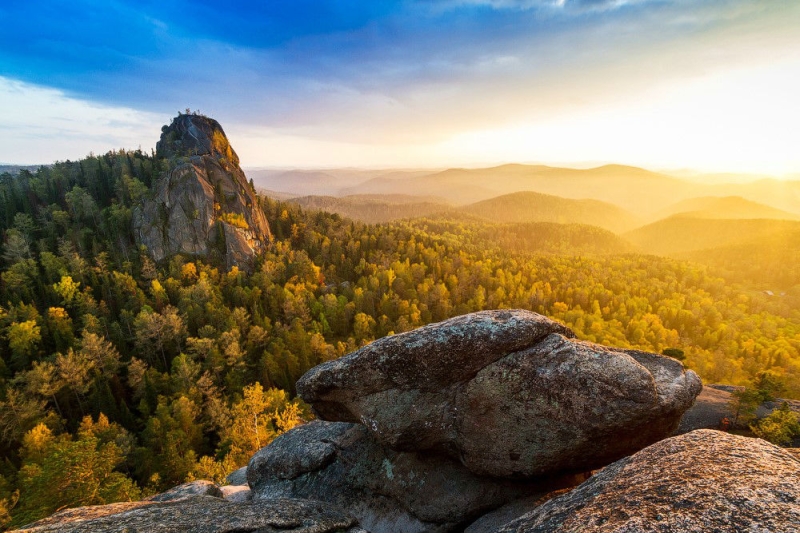
Stolby Nature Reserve
The Stolby Nature Reserve is a favorite place for Krasnoyarsk residents to walk. More than 350 thousand people visit it annually, sometimes on a weekend, up to 20 thousand visitors pass along the most popular route.
Interestingly, this is the only nature reserve in Russia created on the initiative of the residents themselves to preserve the picturesque area from deforestation and natural stone mining.
The name “Pillars” is not accidental: the main attraction of the reserve is the syenite rocks, which, at the behest of nature, took the form of gigantic giants with guessable outlines of people, animals and mythological creatures.
The most popular is the circular route, starting from the First Pillar, then through the rocks Granddaughter, Grandma, Grandfather, Feathers, Lion Gate, Fourth, Third and Second Pillars and back to the First Pillar and Elephant.
Where is: Sverdlovskaya street, stop “Turbaza” (Central entrance)
The reserve is open daily during daylight hours
Map of the reserve on the official website: zapovednik-stolby.ru
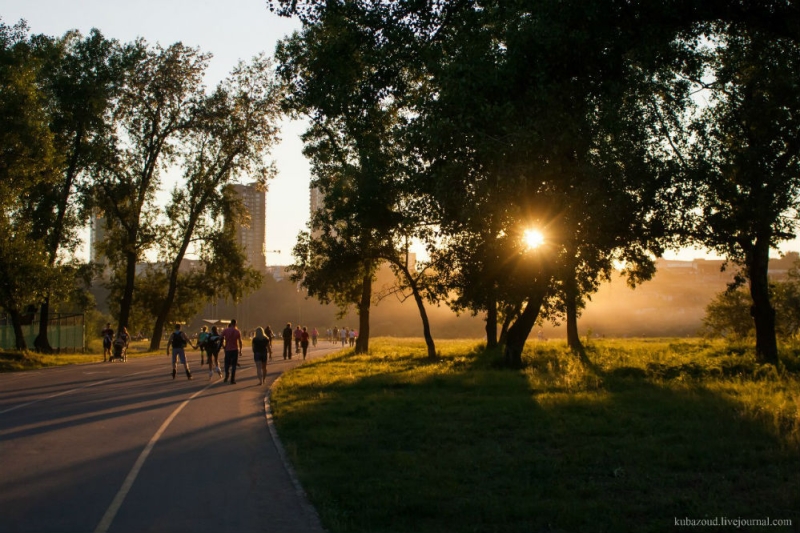
Tatyshev Island
This island is the best place for active recreation. Here you can walk, ride a bike or rollerblade, have a picnic on the grass, feed the gophers and ducks.
Tatyshev is the largest island on the Yenisei within the boundaries of Krasnoyarsk. A beach area, an apple orchard and arboretum, a children’s playground, an open-air library, sports and concert venues, bicycle paths – you can’t count all the island’s facilities. In winter, the largest skating rink in the city is filled here and ski slopes operate.
The island is connected to the banks of the Yenisei by two bridges – the Oktyabrsky automobile bridge and the pedestrian cable-stayed bridge. Initially, the cable-stayed bridge was named after the founder of Krasnoyarsk, Andrei Dubensky. It was here, at the confluence of the Kacha and the Yenisei, that a detachment of Cossacks led by Dubensky landed in 1628. Later the bridge was renamed Vinogradovsky, after the name of the architect-builder.
The cable-stayed bridge is part of the architectural ensemble of Strelka, which includes the building of the regional philharmonic society, the high-rise building KATEKNII, and a shopping and office center. On the square in front of the Great Concert Hall there is a monument to one of the leaders of the first Russian circumnavigation of the world, Commander Rezanov, and his grave.
A map of the island and directions can be found on the website: tatyshev.ru
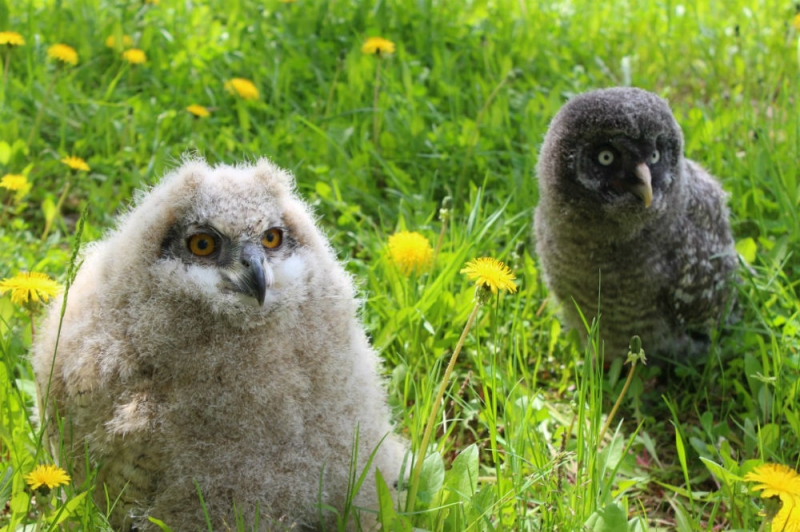
Flora and Fauna Park “Roev Ruchey”
Roev Ruchey is the largest zoo in Russia. Its predecessor can be considered a living corner created in 1947 in the Stolby nature reserve. The decision to create a large zoo was made in December 1999, and in the summer of 2000 the first stage of the facility opened.
Today, in terms of the number of animal species, Roev Ruchey is in the top five zoos in Europe. About seven thousand animals live here and more than seven hundred species are represented. “Swarm Brook” has the only significant collection of mammals from Africa in Siberia: giraffes, white lions, zebras, wildebeest, chimpanzees, penguins. The zoo complex includes one of the largest aquaterrariums in Russia. The park also features more than 600 species and 140 thousand plant specimens.
The park is interesting to take a walk at any time of the year. Festive events and large-scale city promotions are constantly held here.
Address: Sverdlovskaya street, 293
Opening hours for visitors: daily, without breaks and weekends**
Schedule of events and cost of admission on the official website of the park: roev.ru
* Prices for travel and accommodation are indicated at the time of writing. The cost indicated in the material and the final price may vary depending on the season and time for which tickets are purchased.
**Operating hours of organizations are indicated at the time of publication of the text. Opening hours may vary depending on the time of year.
To search for cheap hotels around the world, use OneTwoTrip.
Text author: Daria Teplykh

